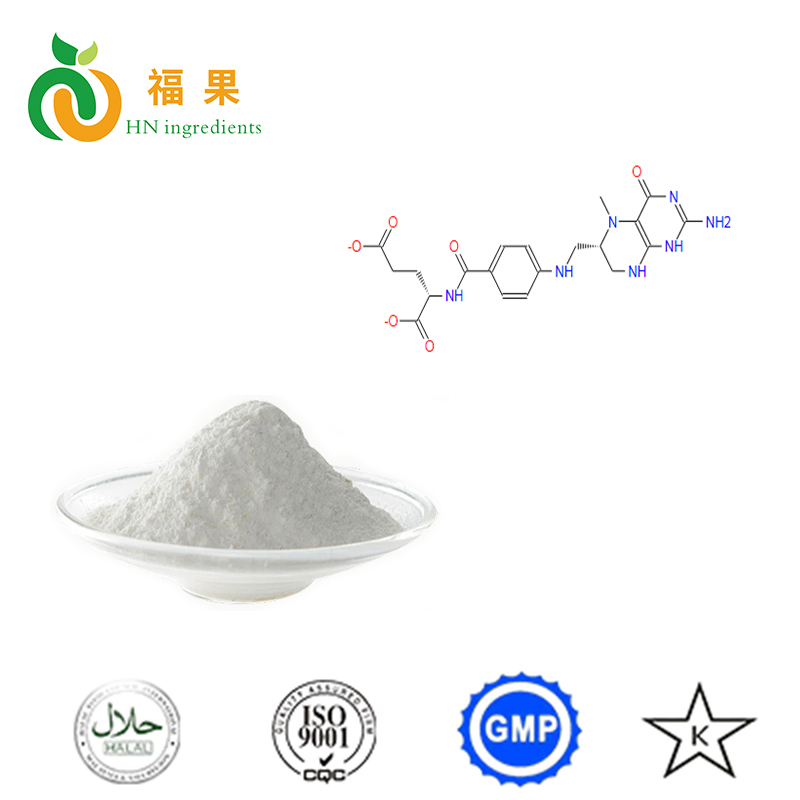
L-5-Methyltetrahydrofolate Calcium (5-MTHF-Ca), also known as active folate or (6S)-5-methyltetrahydrofolate calcium, is the naturally occurring bioactive form of folic acid. While folic acid was first isolated from spinach leaves in 1941, the stable form of L-5-MTHF-Ca wasn't successfully commercialized until 2000 when scientists developed the calcium salt crystal form, solving previous stability issues.
Unlike synthetic folic acid, L-5-MTHF-Ca can be directly absorbed and utilized by the human body without metabolic conversion. The United States approved it as a new folate source in 2001, followed by Europe in 2004, and China in 2017, marking the beginning of the "active folate era".
The manufacturing process of L-5-MTHF-Ca has undergone significant technological advancements. Early synthesis methods were complicated with limited yields. Researchers from Peking University developed a synthesis route starting from folic acid, achieving a total yield of 54%-59%.
Modern processes typically employ one-pot methods under weak alkaline conditions with optimized ratio of folic acid to sodium borohydride (1:24), reacting at 70°C to achieve yields up to 69.97%. The key breakthrough came with crystallization technology - the C-crystal technology not only solved product stability issues but also enhanced bioavailability. Lianyungang Jinkang Hexin Pharmaceutical made significant progress in dissolution rate and stability through patented crystal technology.
The core advantage of L-5-MTHF-Ca lies in its ability to bypass liver metabolism and directly participate in human physiological activities. It represents the main circulating form of folate in plasma and participates in two key metabolic pathways: methylation processes and DNA synthesis.
Clinical applications primarily include:
Preventing birth defects: Directly participates in fetal nervous system development, reducing the risk of neural tube defects
Improving anemia: Serves as hematopoietic raw material for treating megaloblastic anemia caused by folate deficiency
Regulating homocysteine: Reduces blood homocysteine concentration through methylation metabolism, lowering cardiovascular disease risk
Supporting neurological health: Participates in neurotransmitter synthesis, assisting in mood improvement and cognitive function
For populations with MTHFR gene mutations (relatively common in Chinese population), L-5-MTHF-Ca provides an effective folate supplementation solution, avoiding the metabolic challenges associated with regular folic acid.
China dominates the global folate market, accounting for over 90% of global folic acid raw material production, with 60% exported. As an emerging ingredient, L-5-MTHF-Ca has been sold in European and American markets for over 20 years, with a substantial market scale.
Application distribution:
Health products sector: 80% of total volume, mainly for maternal nutrition and daily health supplements
Food industry: As a nutritional fortifier in modulated dairy products, baked goods, etc.
Pharmaceutical industry: For treating megaloblastic anemia and related cardiovascular diseases
Regionally, East and South China are the main consumption markets, benefiting from higher economic development and health awareness. Since China's approval of naturalized folate as a new folate source in 2017, the domestic market has entered a period of rapid growth.
With deepening research on folate metabolism mechanisms and growing health awareness, L-5-MTHF-Ca faces promising market prospects. Future development trends include:
Technical optimization: Continuous improvement of fermentation technology and synthesis processes to enhance yield and purity
Application expansion: From current maternal and infant fields to broader areas like cardiovascular health and neurological support
Awareness popularization: Targeted use of active folate will become increasingly common with the popularization of MTHFR gene testing
Policy support: Government policies supporting folic acid fortification will provide sustained momentum for market growth
L-5-Methyltetrahydrofolate Calcium represents the future direction of folate supplementation. Its excellent bioavailability and extensive application value will play an increasingly important role in the global nutrition and health industry.